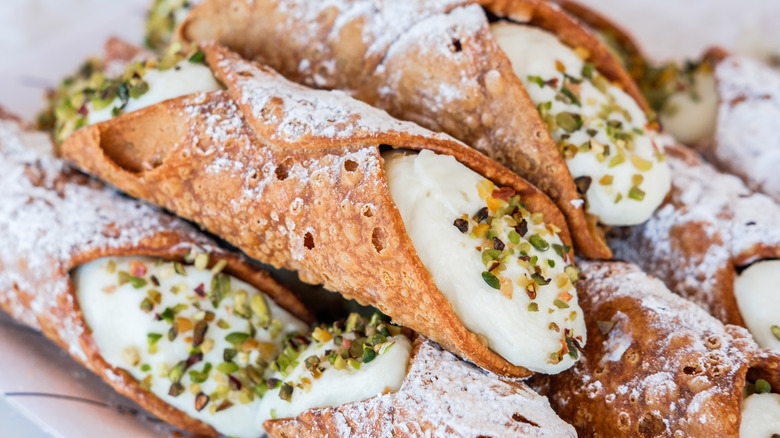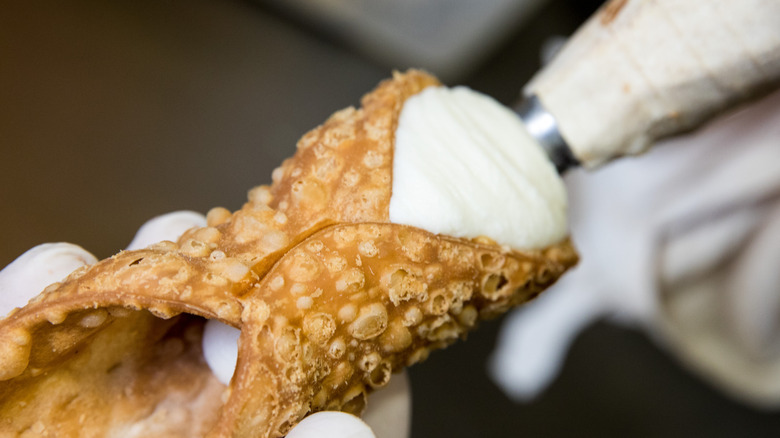The Ingredient Traditional Sicilian Cannolis Always Use
A cannoli, though humble in appearance, is a fine delicacy that combines the richness of ricotta with the crunch of deep-fried dough. Maybe it's due to the way the fragile shell shatters with one bite to blend with a thick, yet smooth, sweetened cheese filling. Whatever the reason, the cannoli is one of Italy's most famous desserts, and every restaurant or nonna seems to have their own recipe for this classic pastry. Mangia Bedda's recipe shows that the most obvious is the difference between added toppings, where we see crushed pistachios, chocolate chips, or even caramel glued to the ricotta. Of course, in every nonna's recipe, there are differences in the type of flour used for the shell, or the ratio of ricotta to sugar — yet a cannoli is still a cannoli.
The signature tube shape, filled to the brim with ricotta on both sides and finished with a generous dusting of powdered sugar, can't be mistaken for anything else. But what about the original cannolis that first popped up in Sicily during the Arabic occupation of the island (via Cannoli Kitchen)? Though cannolis have evolved since then, Sicilians remain faithful to some of the traditions of cannoli making. Other cannolis can taste just as delectable, but those made outside of Sicily usually lack a local ingredient that adds a unique flavor to the mix.
Sheep's milk ricotta
When Italians arrived in the States in the early 1900s, they made cannolis with the ingredients that were available to them, per Cannoli Kitchen. The biggest alteration to the traditional Sicilian recipe was the use of mascarpone, or cow's milk ricotta, instead of sheep's milk ricotta. Although it sounds like a rarity, sheep's milk ricotta was a fairly common cheese in Sicily, as it still is today in regions of Italy like Tuscany and Lazio (via Delallo). Delallo notes that the practice of using sheep's milk for cheese dates back to ancient Roman times, when Cato the Elder regulated the uses for sheep's milk.
You may well ask: Is there really a difference between sheep's milk ricotta and cow's milk ricotta? After all, sheep's milk ricotta alternatives have worked for centuries, and they still do anywhere outside of Sicily. But the fact is, sheep's milk ricotta is very different from the ricotta we are familiar with; it has an extra dimension of tang that a neutral cow's milk ricotta lacks. Perhaps we've grown so accustomed to the cow's milk variety that we may even prefer it, but a classic Sicilian cannoli with a base of sheep's milk ricotta can be life-changing. In fact, the region of Lazio has a monopoly on a specialty sheep's milk ricotta that is low in fat with an incredibly light texture and tang. This ricotta is what's missing from the cannolis we see at the store, though you can still make a Sicilian-style cannoli at home.

